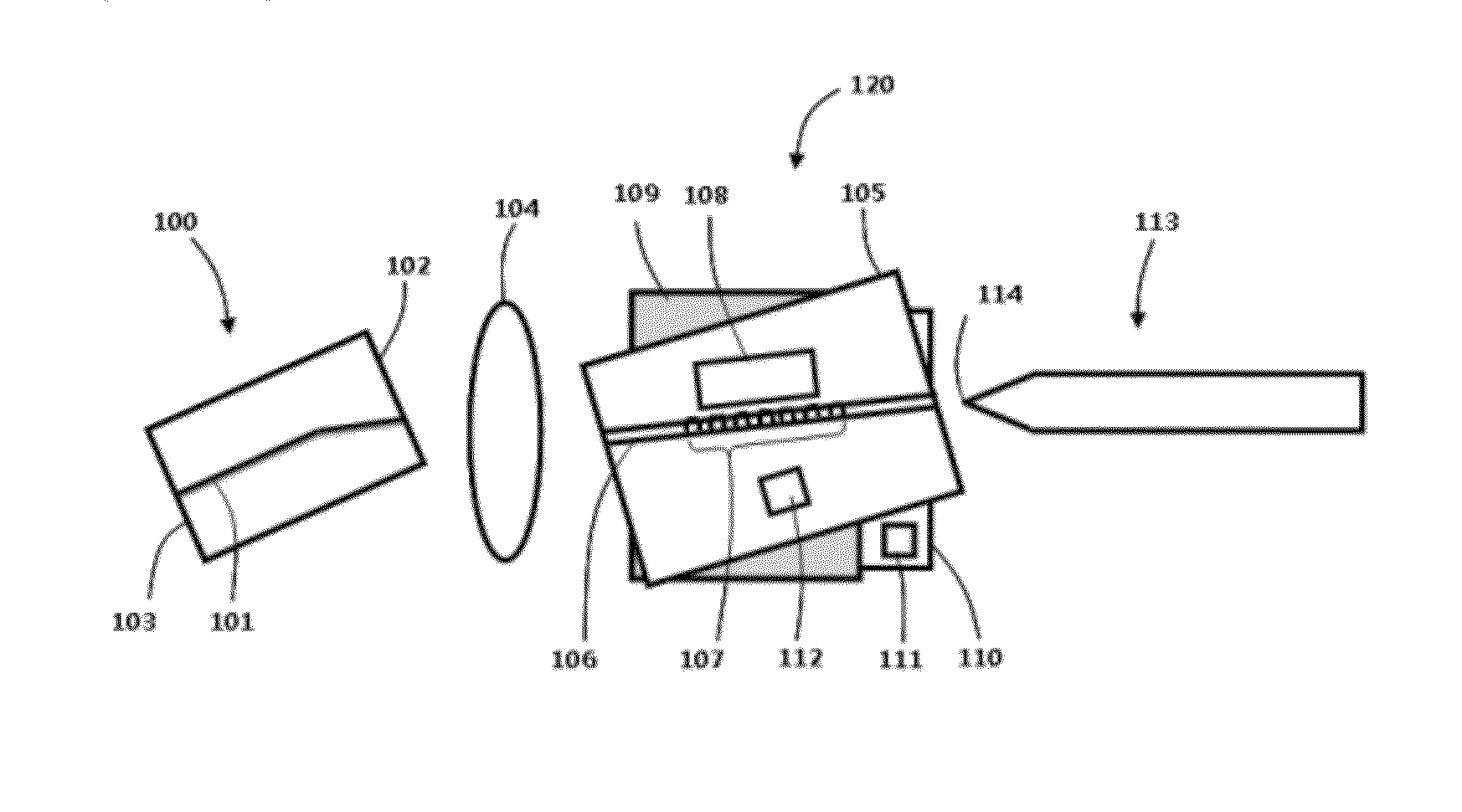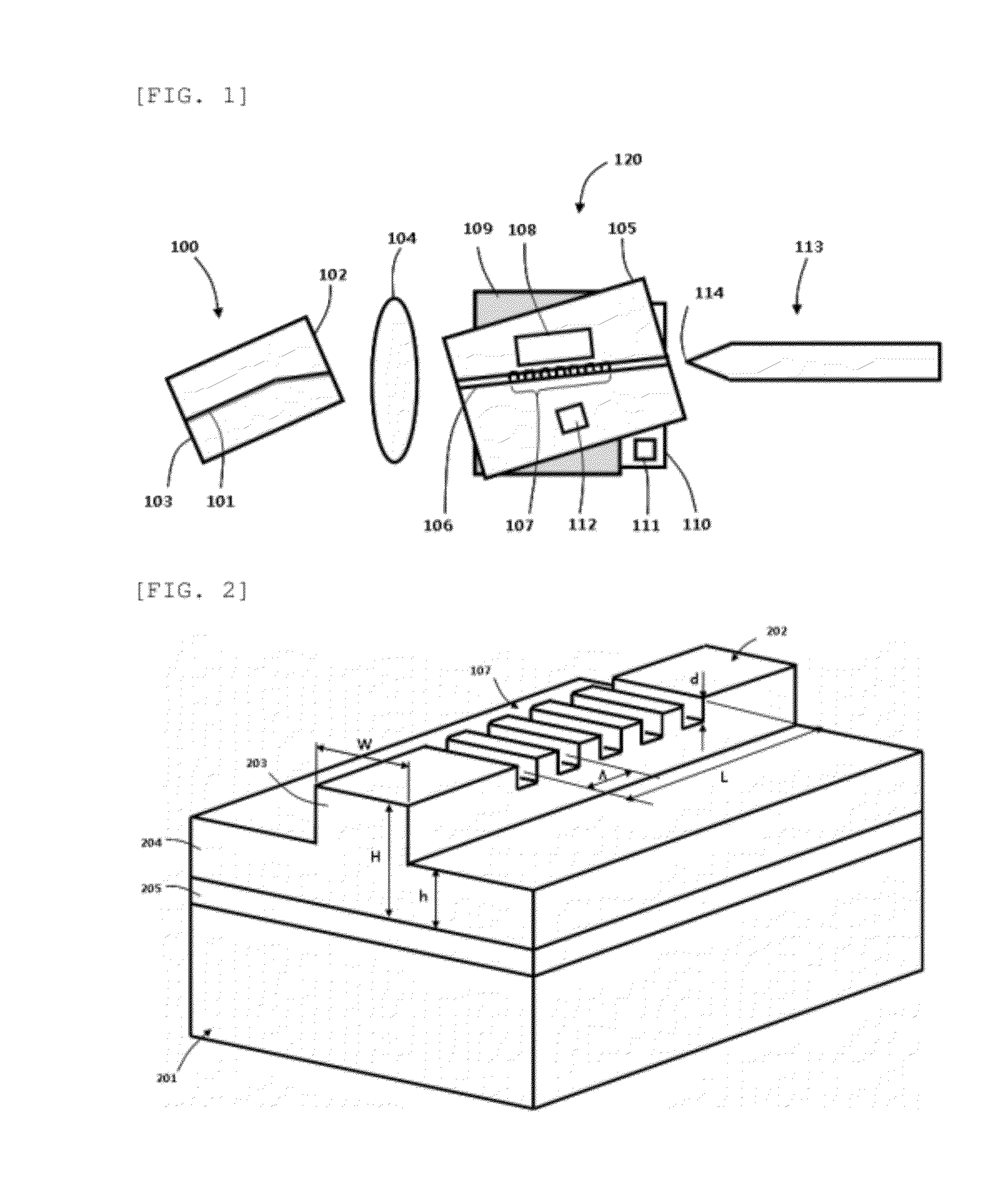External cavity tunable laser module
a laser module and external cavity technology, applied in semiconductor lasers, laser details, electrical equipment, etc., can solve the problems of large economic burden on both users and operators, commercialization of wdm-pon, and the ability to be applied, so as to reduce the cost, increase the production yield, and improve the reproducibility of the wavelength at the time of wavelength tuning
- Summary
- Abstract
- Description
- Claims
- Application Information
AI Technical Summary
Benefits of technology
Problems solved by technology
Method used
Image
Examples
Embodiment Construction
of Main Elements]100: light source120:wavelength tunablefilter105:semiconductor substrate106:semiconductoroptical waveguide107:Bragg grating113:optical fiber110: thermoelectric cooler111:secondtemperature sensor112:first temperature sensor511:housing109:heat insulating layer512: metal layer104, 513:optical coupling lens
BEST MODE
[0044]Hereinafter, a wavelength tunable external cavity semiconductor laser module according to the present invention will be described in detail with reference to the accompanying drawings. The drawings to be provided below are provided by way of example so that the idea of the present invention can be sufficiently transferred to those skilled in the art to which the present invention pertains. Therefore, the present invention is not be limited to the drawings provided below but may be modified in many different forms. In addition, like reference numerals denote like elements throughout the specification.
[0045]Technical terms and scientific terms used in the...
PUM
 Login to View More
Login to View More Abstract
Description
Claims
Application Information
 Login to View More
Login to View More - R&D
- Intellectual Property
- Life Sciences
- Materials
- Tech Scout
- Unparalleled Data Quality
- Higher Quality Content
- 60% Fewer Hallucinations
Browse by: Latest US Patents, China's latest patents, Technical Efficacy Thesaurus, Application Domain, Technology Topic, Popular Technical Reports.
© 2025 PatSnap. All rights reserved.Legal|Privacy policy|Modern Slavery Act Transparency Statement|Sitemap|About US| Contact US: help@patsnap.com



